After All (Depois de tudo)
A report about an experience at Porto Alegre after the flood in last year
All these photographs were taken after a flood that devastated Rio Grande do Sul. The purpose of these visits, documented by Renan Lemos, was to collect data and provide support to peripheral areas through the work carried out by SEIDAPE (Extraordinary Secretariat for Digital Inclusion and Support for Equity Policies), led by Lisiane Lemos (formerly of Google and Microsoft), together with Chief of Staff Cristina Viana and with Marcelo, Greicy, Camila, Tracy, and Nadiele.
News about:
1. Brazil: Floods in Rio Grande do Sul - United Nations Situation Report, as of 20 September 2024 | OCHA
2. 2024 Rio Grande do Sul Brazil Floods - Center for Disaster Philanthropy
3. In Rio Grande do Sul, death tool due to flooding rises to 169 – Brasil de Fato
_
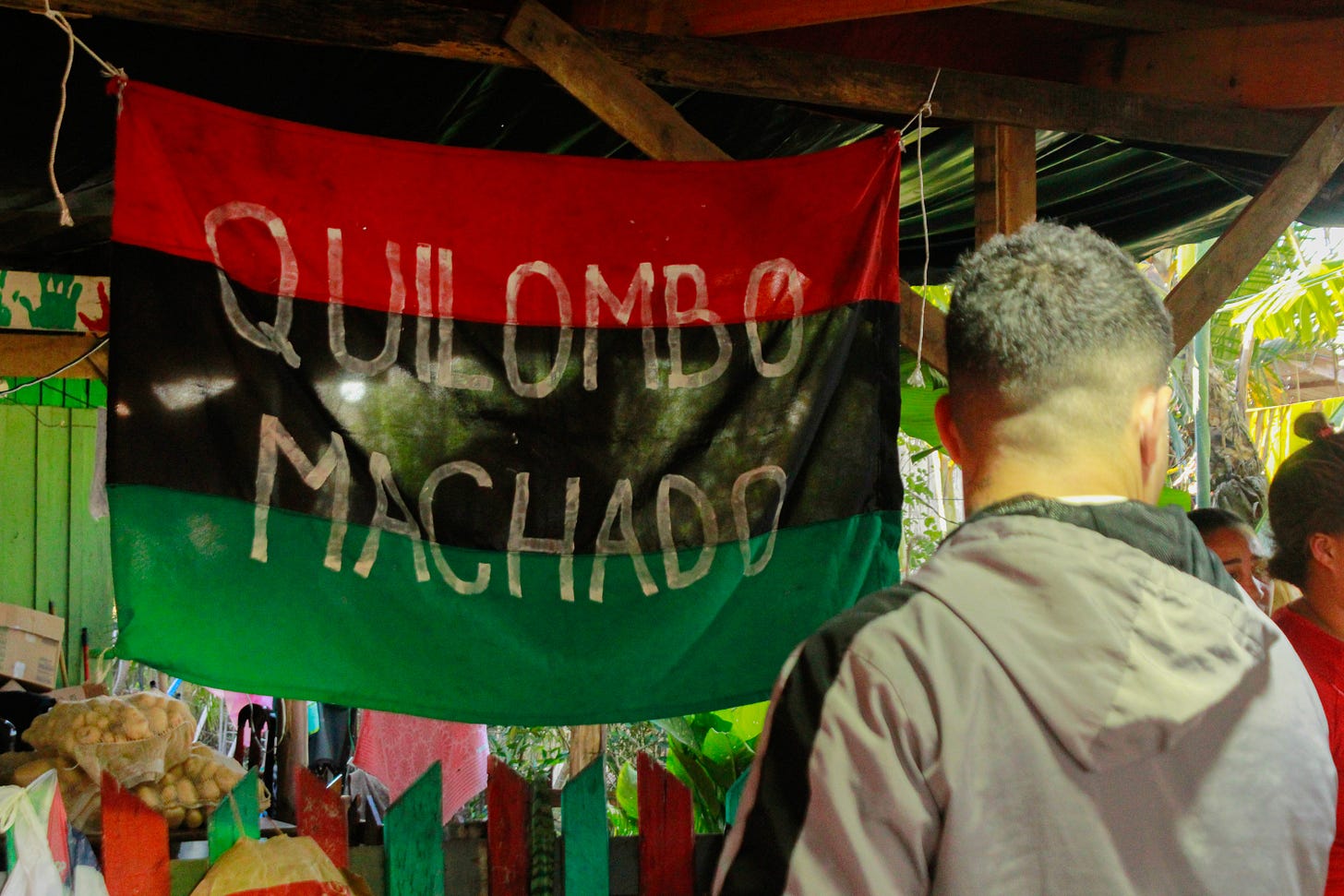
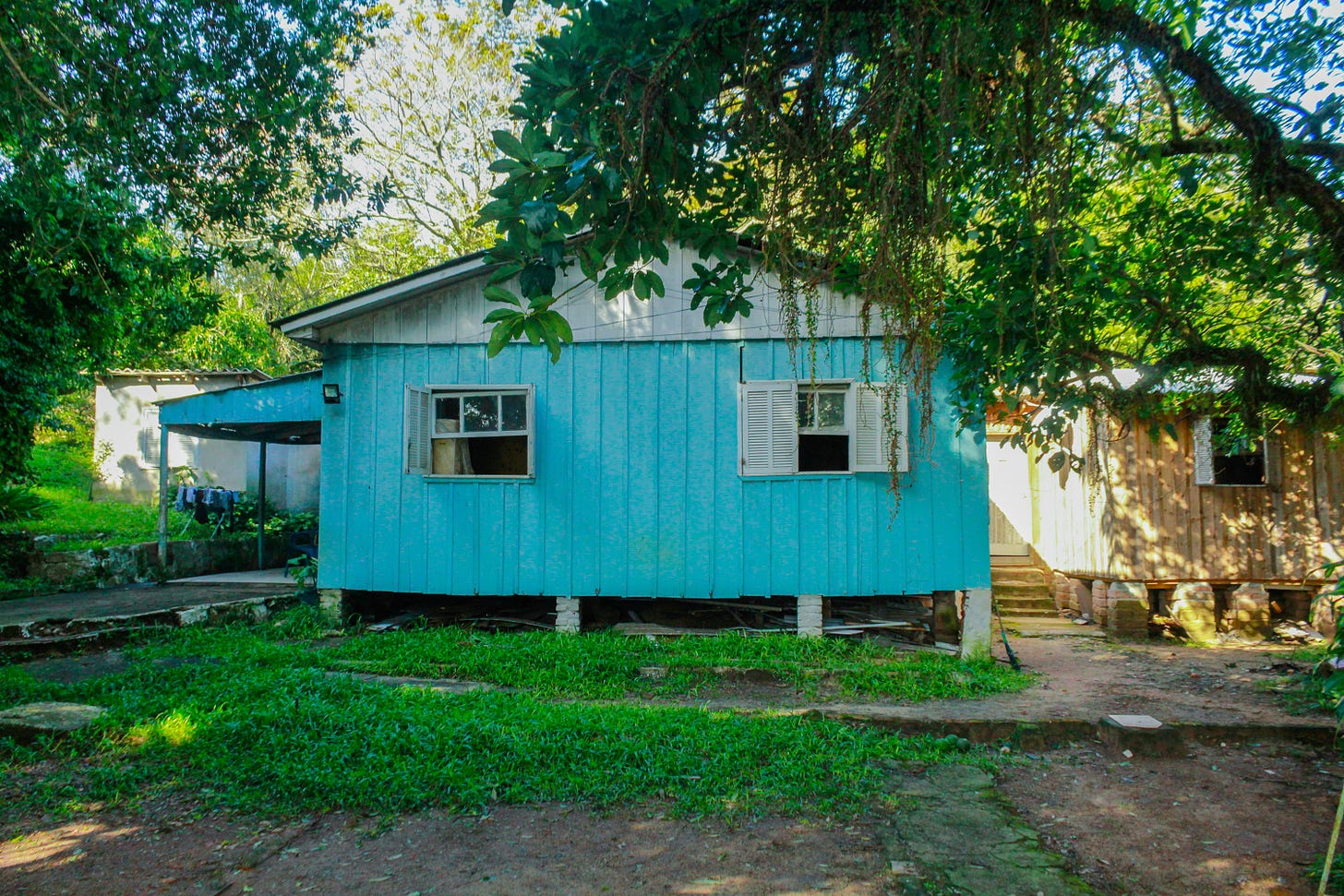
This text results from a series of visits conducted after the flood that struck the state of Rio Grande do Sul in April and May 2024. These visits were organized by SEIDAPE (Extraordinary Secretariat for Digital Inclusion and Support for Equity Policies) and led by Lisiane Lemos, with support from Chief of Staff Cristina Viana and a team composed of Marcelo, Camila, Greicy, and Tracy. The purpose of these images and documentation was to record what happened during the interactions with the quilombos, while I, as a volunteer, captured what was unfolding.
The flood had a devastating impact on the state and was widely covered on television and online media. It was a catastrophe that terrorized both the largest cities—such as the capital—and the smallest, affecting communities from the north to the south. During my time in the region, I witnessed the delivery of essential supplies and noticed a large-scale task force mobilizing major entities (such as companies) and individuals from other states, including Mato Grosso do Sul and São Paulo, to support relief efforts
The primary objective of these visits was to collect data and make strategic decisions regarding aid and support. Experts and community members were invited to contribute to the discussions, and I documented the exchanges and decisions through images during May 21, 27, and 29, 2024. At that time, many areas were still fighting for better conditions—some were covered in mud, while homes and businesses lay in ruins. Today, the situation has improved, with roads repaired and people either returning to their homes or relocating due to concerns about future risks.
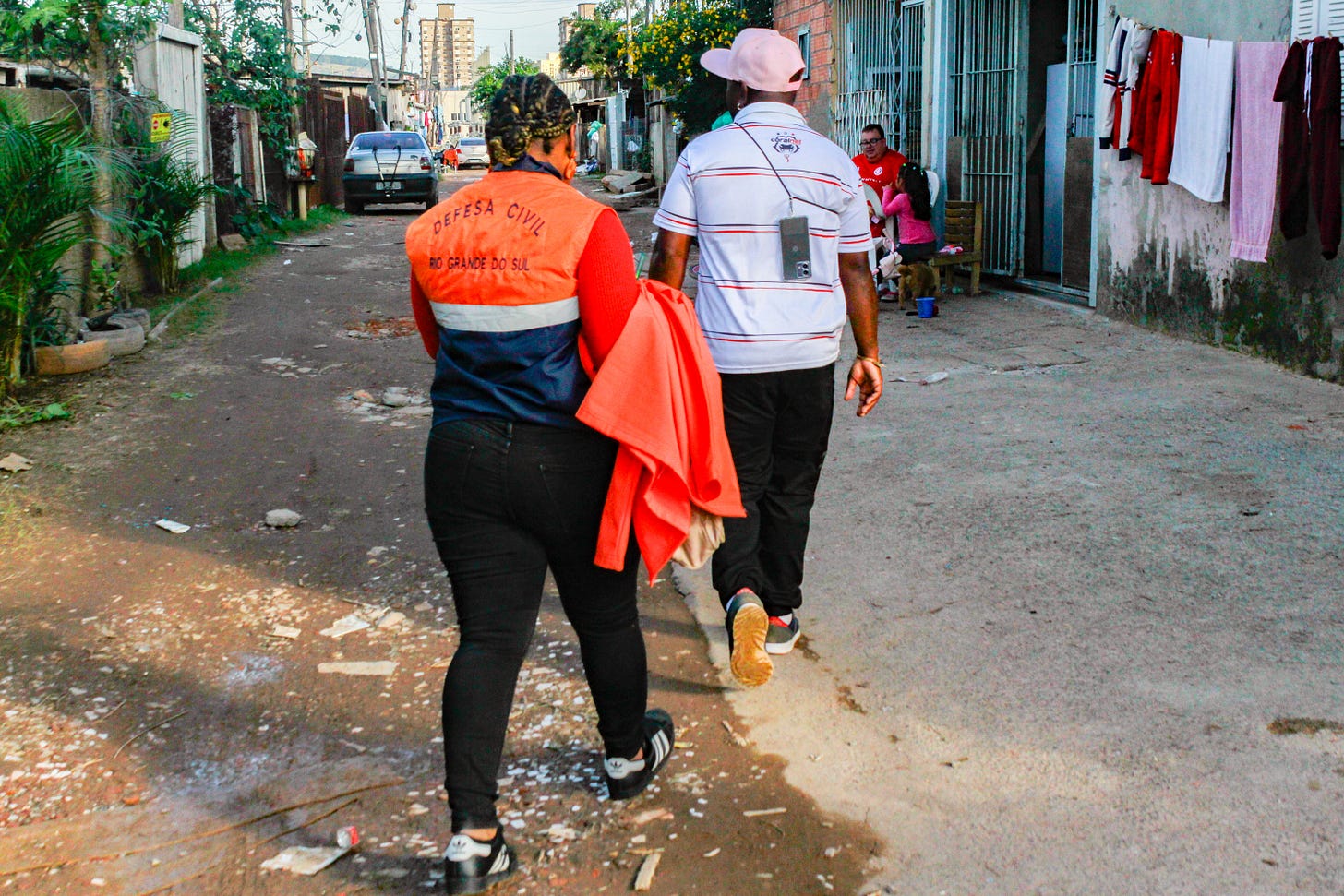
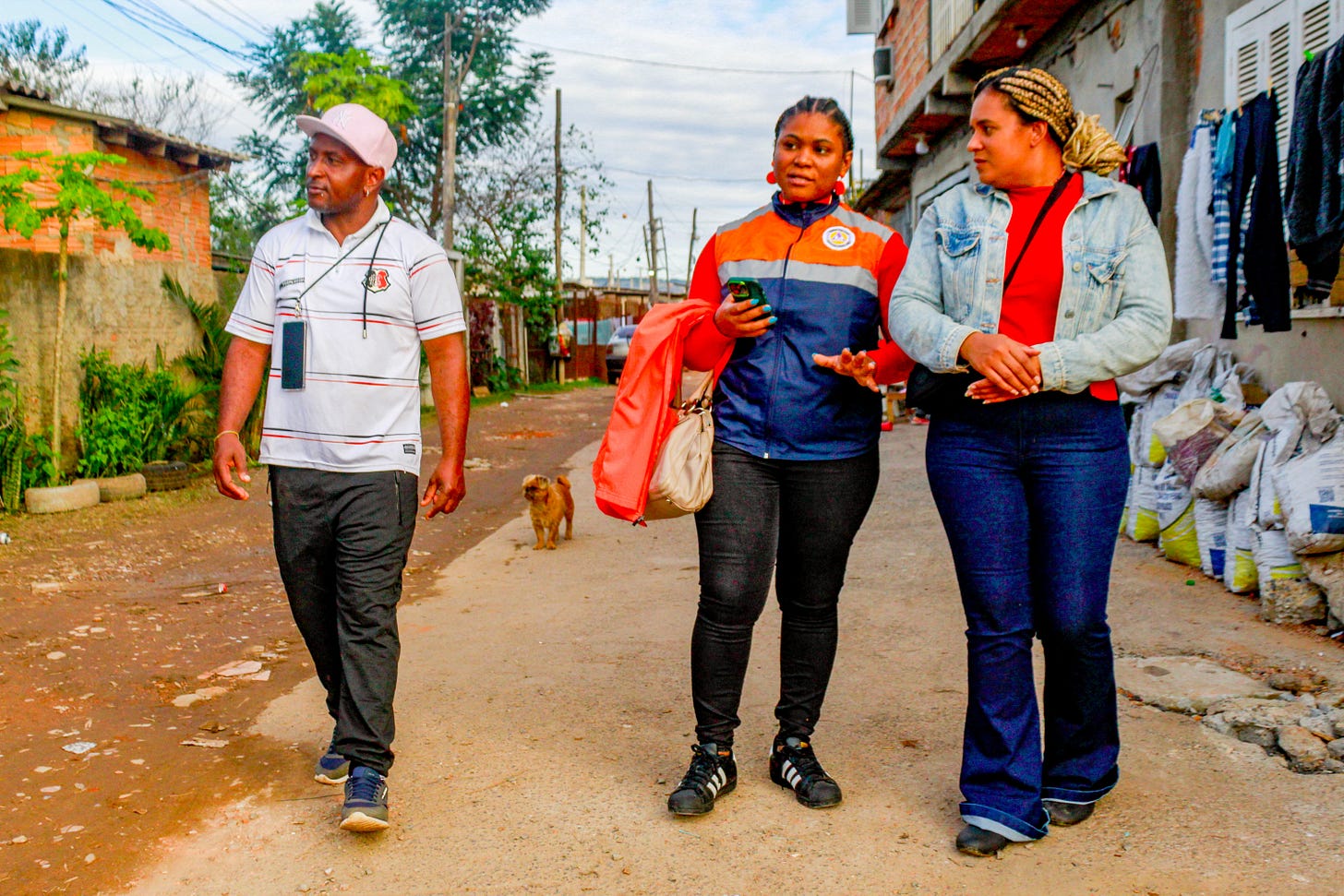

The first visits took place at Quilombo dos Machados, where we spent three days. Numerous conversations unfolded among the people present. On the first day, four individuals visited the quilombo. By the second day, the group had grown, as there was an intention to plan a reconstruction. On the final day, we were in a hurry, staying on-site for only a short time. The leader of the quilombo explained the entire situation to us, sharing insights into how the community navigated its highs and lows. During the visit, they were still in the process of organizing and receiving external support, including truckloads of supplies arriving from out of state. Observations and notes were gathered by all present, including me, as a photographer exploring a new space within the state capital.
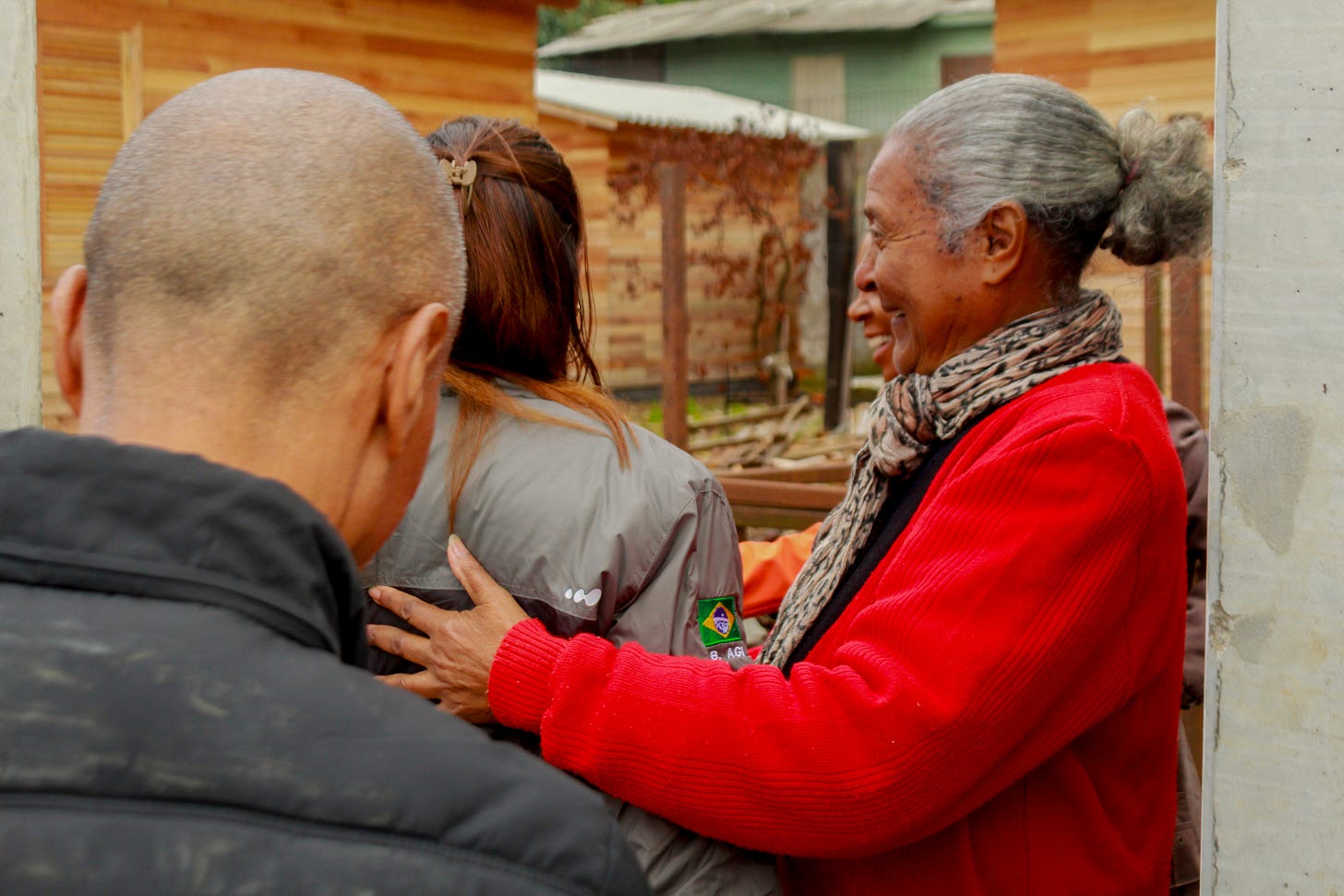
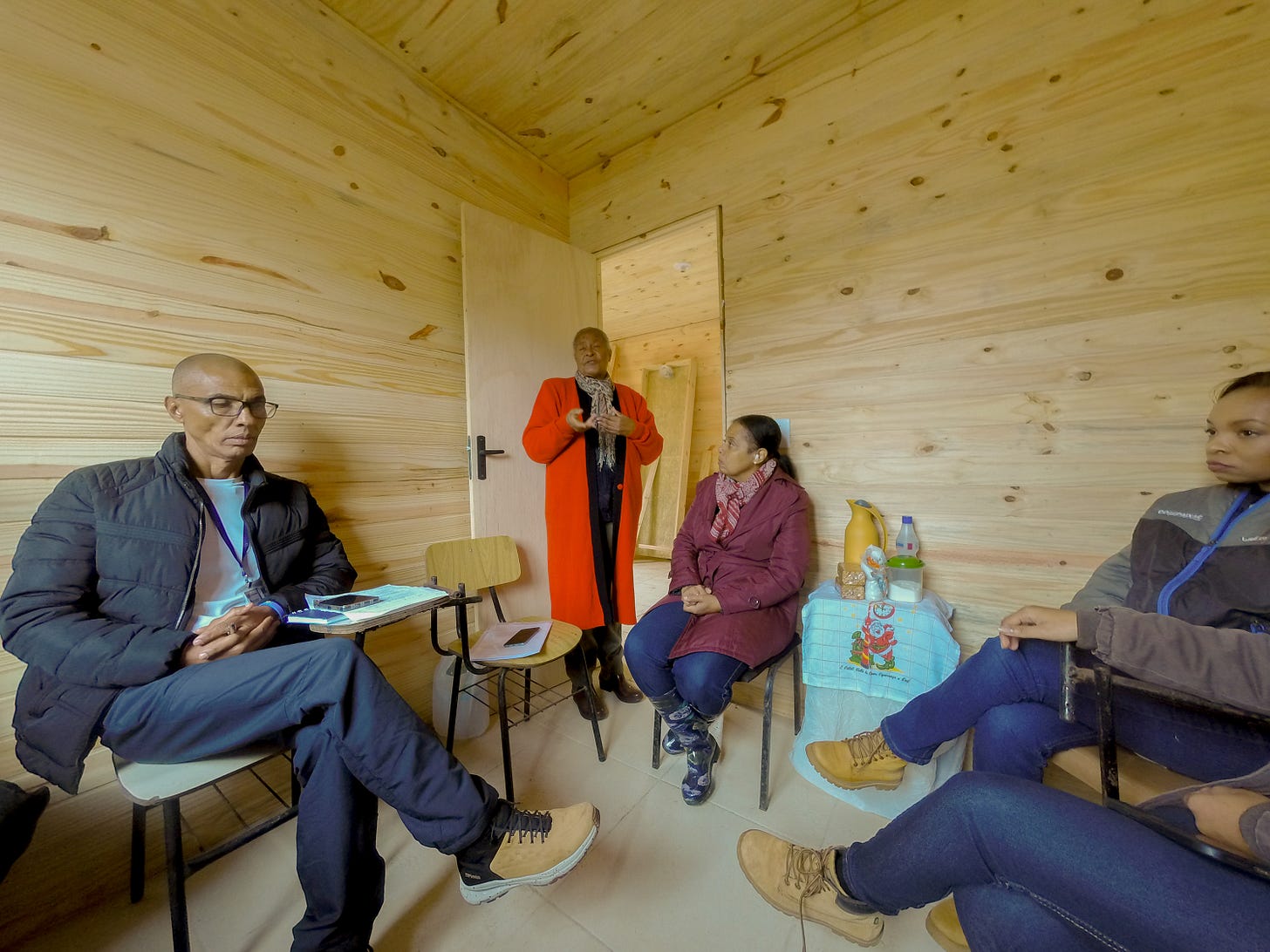
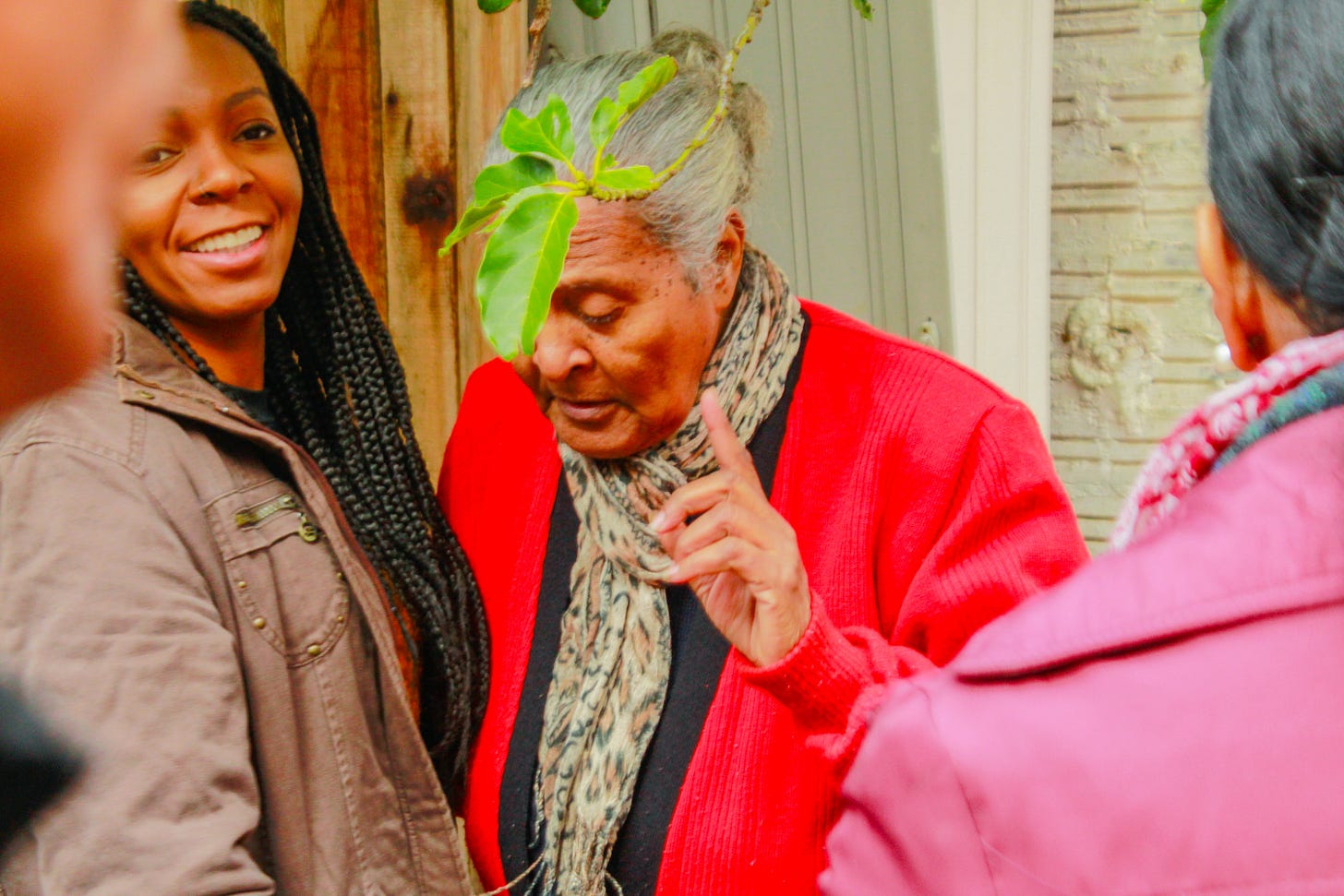
The second quilombo we visited was Mocambo, the first one we observed nestled among the urban structures of Porto Alegre. It was a small area, yet one filled with stories of survival and resilience. We were welcomed by two individuals responsible for various activities essential to the quilombo, including documentation and seeking external support. There were a few chalets and buildings they guided us through while explaining their work. These two women soon engaged in discussions with SEIDAPE representatives and two additional individuals who had traveled to Rio Grande do Sul specifically to assist—cleaning homes and participating in relief efforts. This marked the second visit on the third day, during which we also visited three more quilombos: Lemos, Kédi, and, once again, Machados.

On that same day, we explored other sites, making our way through different parts of Porto Alegre. Quilombo Lemos was located across from a major soccer stadium, belonging to one of the state's most prominent clubs, Sport Club Internacional. In front of the quilombo was a garage; entering it, we ascended several steps before reaching the residential area where conversations took place. The community leader recounted the struggles they had endured to maintain their presence there.
Following that, we visited the final quilombo on our itinerary: Kédi. My initial impression quickly evolved as I witnessed its surroundings—situated between luxury buildings, the quilombo spanned a large area. It was home to many people and remained lively, even in the aftermath of the flood. There was loud music playing, and numerous individuals walked around the area. Before beginning our exploration, we spoke with residents who had been preparing meals to distribute to the population in need.
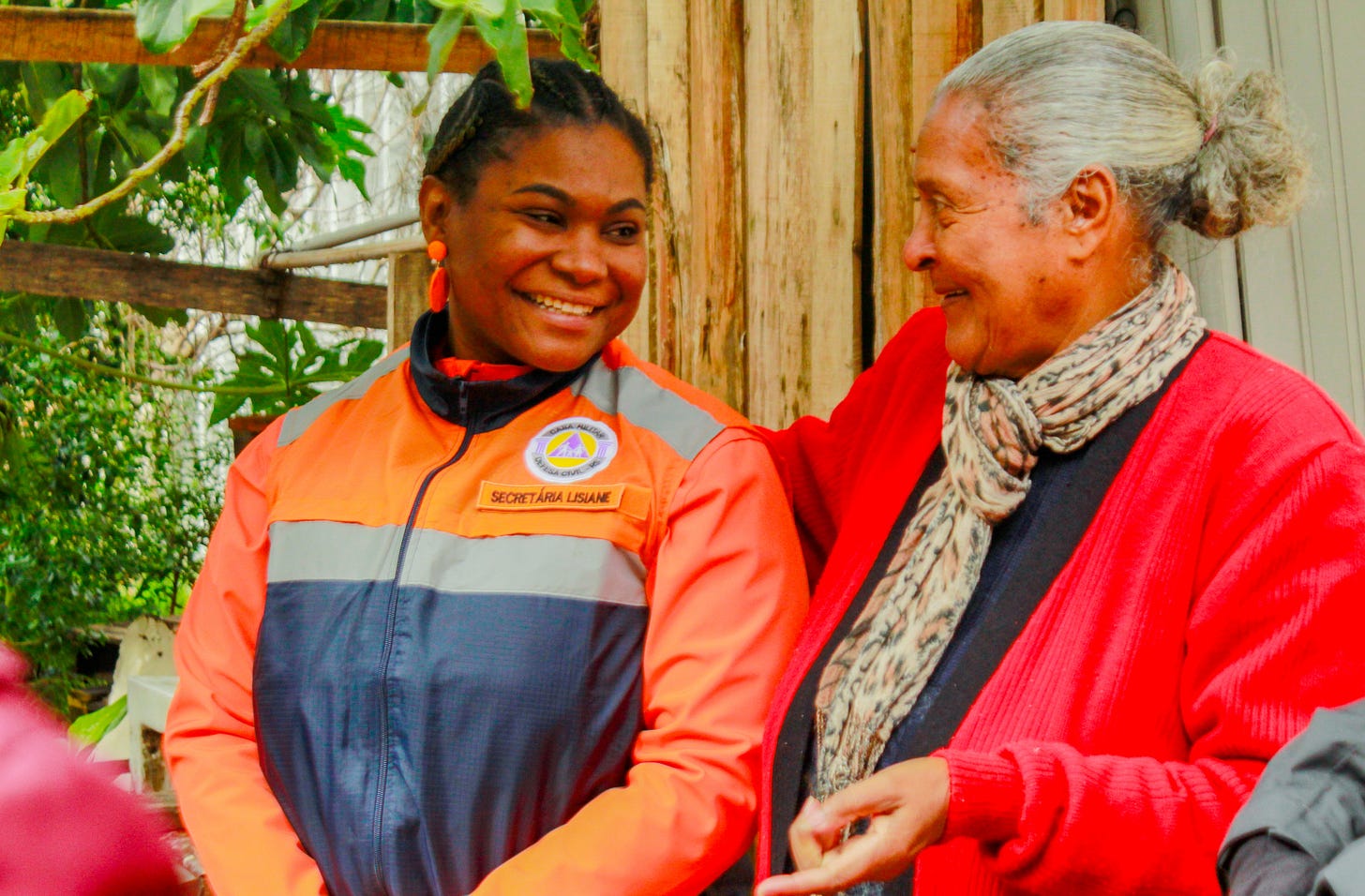
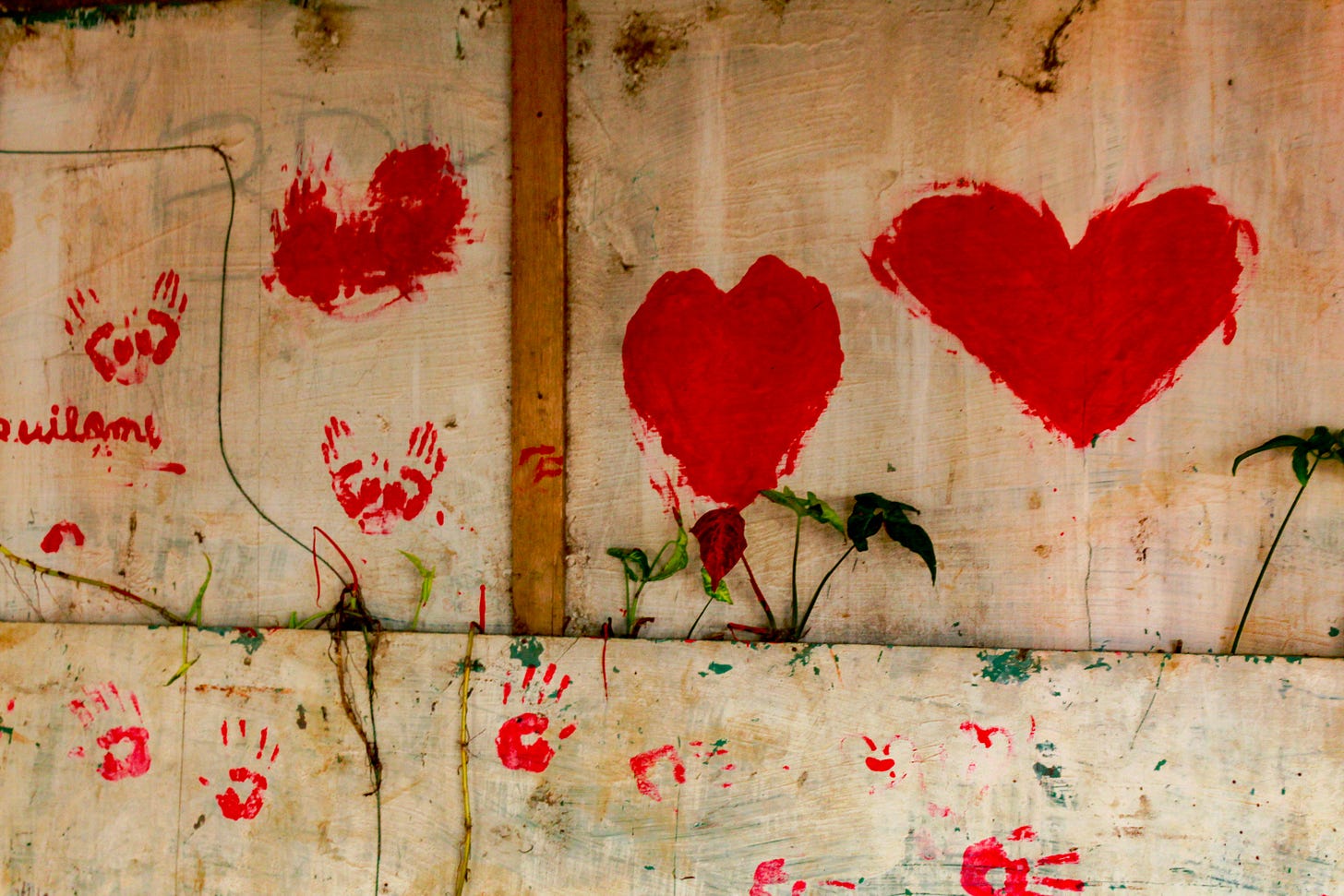
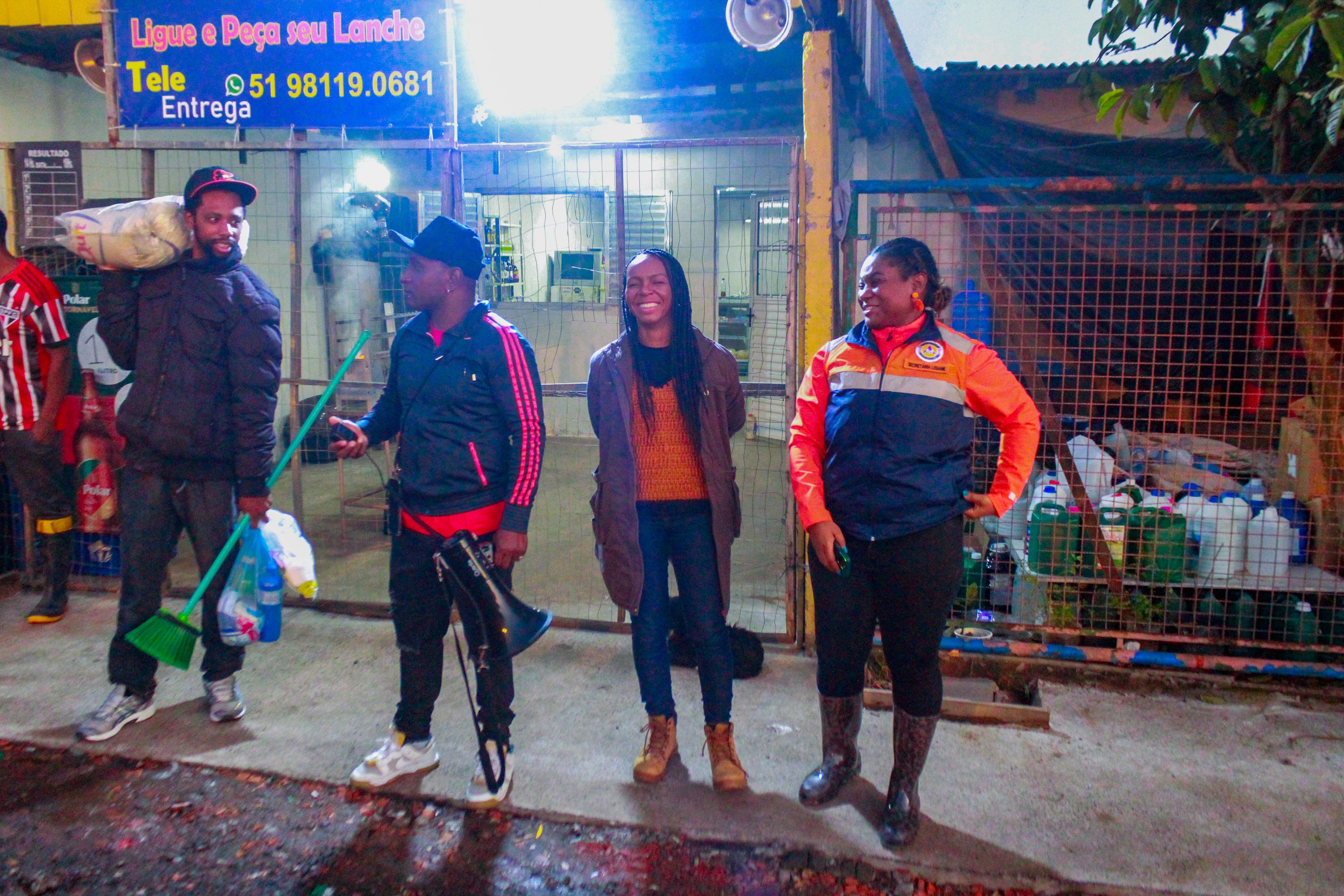
In the end, every effort was worthwhile—yesterday, today, and always. I met new people, established connections, and discovered places that many may never have the opportunity to visit. I am deeply grateful for what photography allowed me to document during this post-flood period. The past year taught me invaluable lessons, and I still remember the news and events vividly—one year and a few days later.
_
Over a total of three days, we visited, learned about, and investigated what was really happening within these quilombos in Porto Alegre. We walked, talked, and made every effort to address the issues raised by our team. Negotiations, agreements, and attempts were made to facilitate support activities in areas overlooked by mainstream media. These visits took place on May 21, 27, and 29, 2024.



